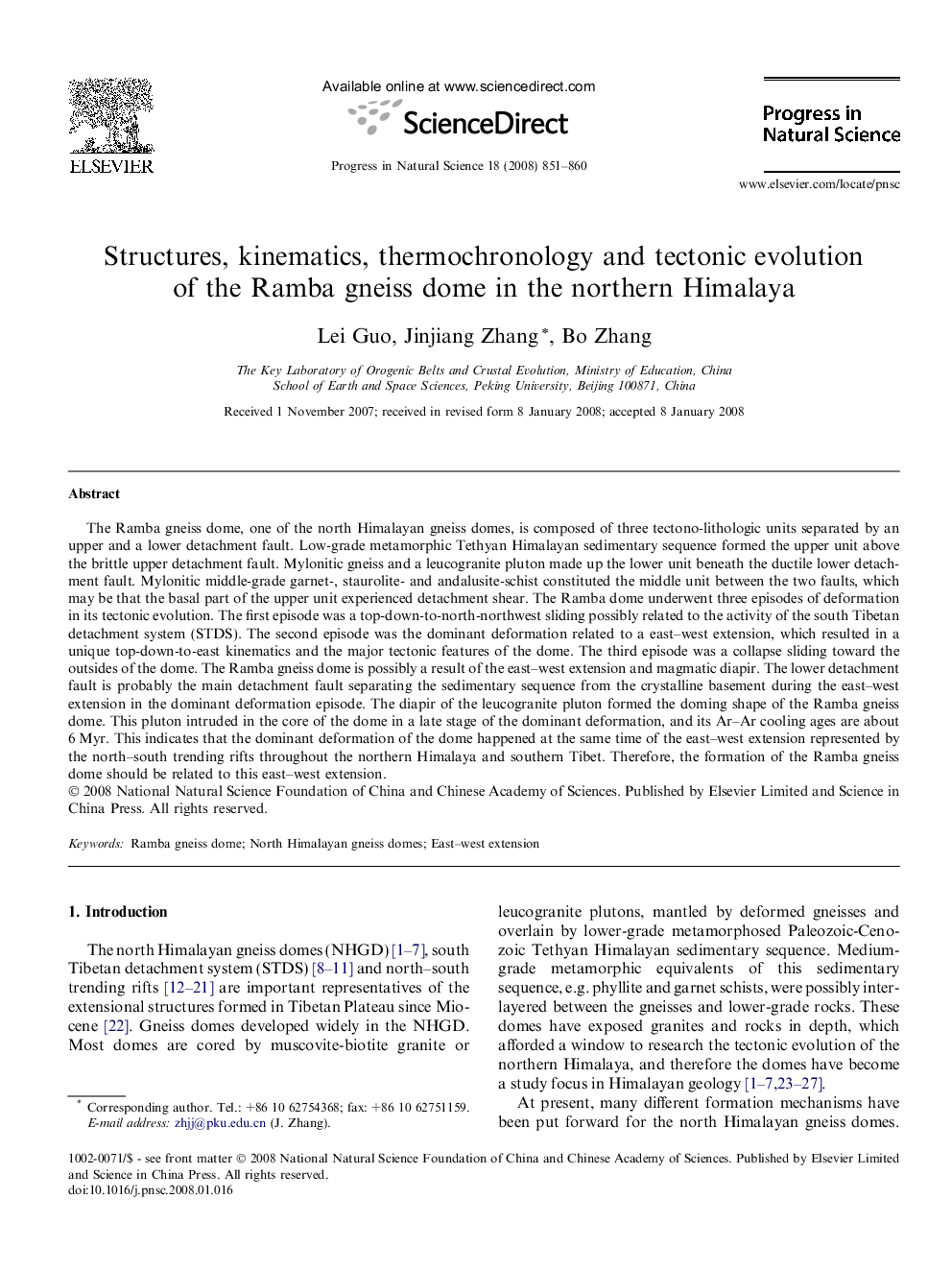| کد مقاله | کد نشریه | سال انتشار | مقاله انگلیسی | نسخه تمام متن |
|---|---|---|---|---|
| 1548990 | 997767 | 2008 | 10 صفحه PDF | دانلود رایگان |
عنوان انگلیسی مقاله ISI
Structures, kinematics, thermochronology and tectonic evolution of the Ramba gneiss dome in the northern Himalaya
دانلود مقاله + سفارش ترجمه
دانلود مقاله ISI انگلیسی
رایگان برای ایرانیان
موضوعات مرتبط
مهندسی و علوم پایه
مهندسی مواد
مواد الکترونیکی، نوری و مغناطیسی
پیش نمایش صفحه اول مقاله

چکیده انگلیسی
The Ramba gneiss dome, one of the north Himalayan gneiss domes, is composed of three tectono-lithologic units separated by an upper and a lower detachment fault. Low-grade metamorphic Tethyan Himalayan sedimentary sequence formed the upper unit above the brittle upper detachment fault. Mylonitic gneiss and a leucogranite pluton made up the lower unit beneath the ductile lower detachment fault. Mylonitic middle-grade garnet-, staurolite- and andalusite-schist constituted the middle unit between the two faults, which may be that the basal part of the upper unit experienced detachment shear. The Ramba dome underwent three episodes of deformation in its tectonic evolution. The first episode was a top-down-to-north-northwest sliding possibly related to the activity of the south Tibetan detachment system (STDS). The second episode was the dominant deformation related to a east-west extension, which resulted in a unique top-down-to-east kinematics and the major tectonic features of the dome. The third episode was a collapse sliding toward the outsides of the dome. The Ramba gneiss dome is possibly a result of the east-west extension and magmatic diapir. The lower detachment fault is probably the main detachment fault separating the sedimentary sequence from the crystalline basement during the east-west extension in the dominant deformation episode. The diapir of the leucogranite pluton formed the doming shape of the Ramba gneiss dome. This pluton intruded in the core of the dome in a late stage of the dominant deformation, and its Ar-Ar cooling ages are about 6Â Myr. This indicates that the dominant deformation of the dome happened at the same time of the east-west extension represented by the north-south trending rifts throughout the northern Himalaya and southern Tibet. Therefore, the formation of the Ramba gneiss dome should be related to this east-west extension.
ناشر
Database: Elsevier - ScienceDirect (ساینس دایرکت)
Journal: Progress in Natural Science - Volume 18, Issue 7, 10 July 2008, Pages 851-860
Journal: Progress in Natural Science - Volume 18, Issue 7, 10 July 2008, Pages 851-860
نویسندگان
Lei Guo, Jinjiang Zhang, Bo Zhang,